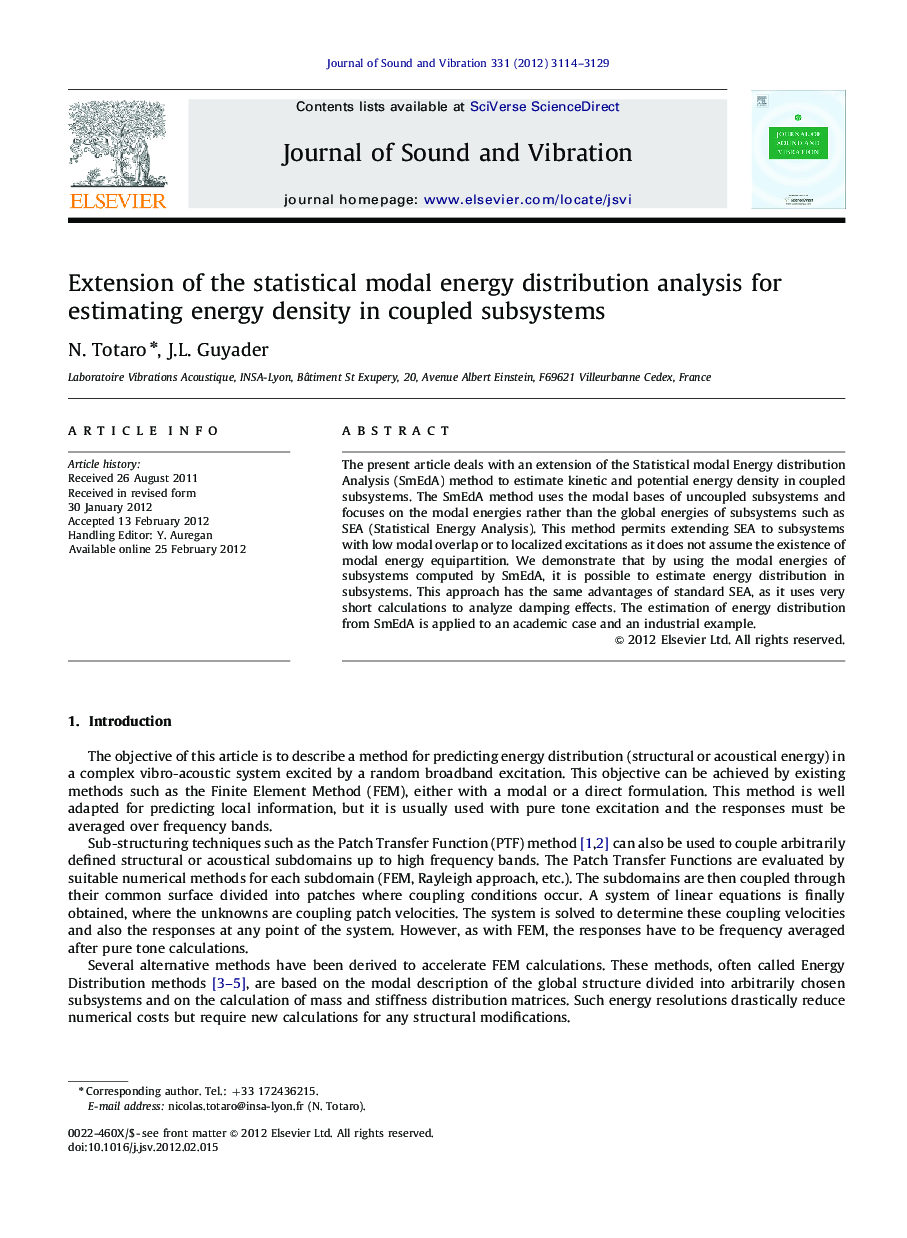| Article ID | Journal | Published Year | Pages | File Type |
|---|---|---|---|---|
| 289054 | Journal of Sound and Vibration | 2012 | 16 Pages |
The present article deals with an extension of the Statistical modal Energy distribution Analysis (SmEdA) method to estimate kinetic and potential energy density in coupled subsystems. The SmEdA method uses the modal bases of uncoupled subsystems and focuses on the modal energies rather than the global energies of subsystems such as SEA (Statistical Energy Analysis). This method permits extending SEA to subsystems with low modal overlap or to localized excitations as it does not assume the existence of modal energy equipartition. We demonstrate that by using the modal energies of subsystems computed by SmEdA, it is possible to estimate energy distribution in subsystems. This approach has the same advantages of standard SEA, as it uses very short calculations to analyze damping effects. The estimation of energy distribution from SmEdA is applied to an academic case and an industrial example.
► Intermodal coupling loss factors between modes of coupled systems as a pre-design tool. ► Estimation of kinetic and potential energy densities in subsystems using modal energies handles by SmEdA method. ► Industrial application on a TGV Duplex train.
